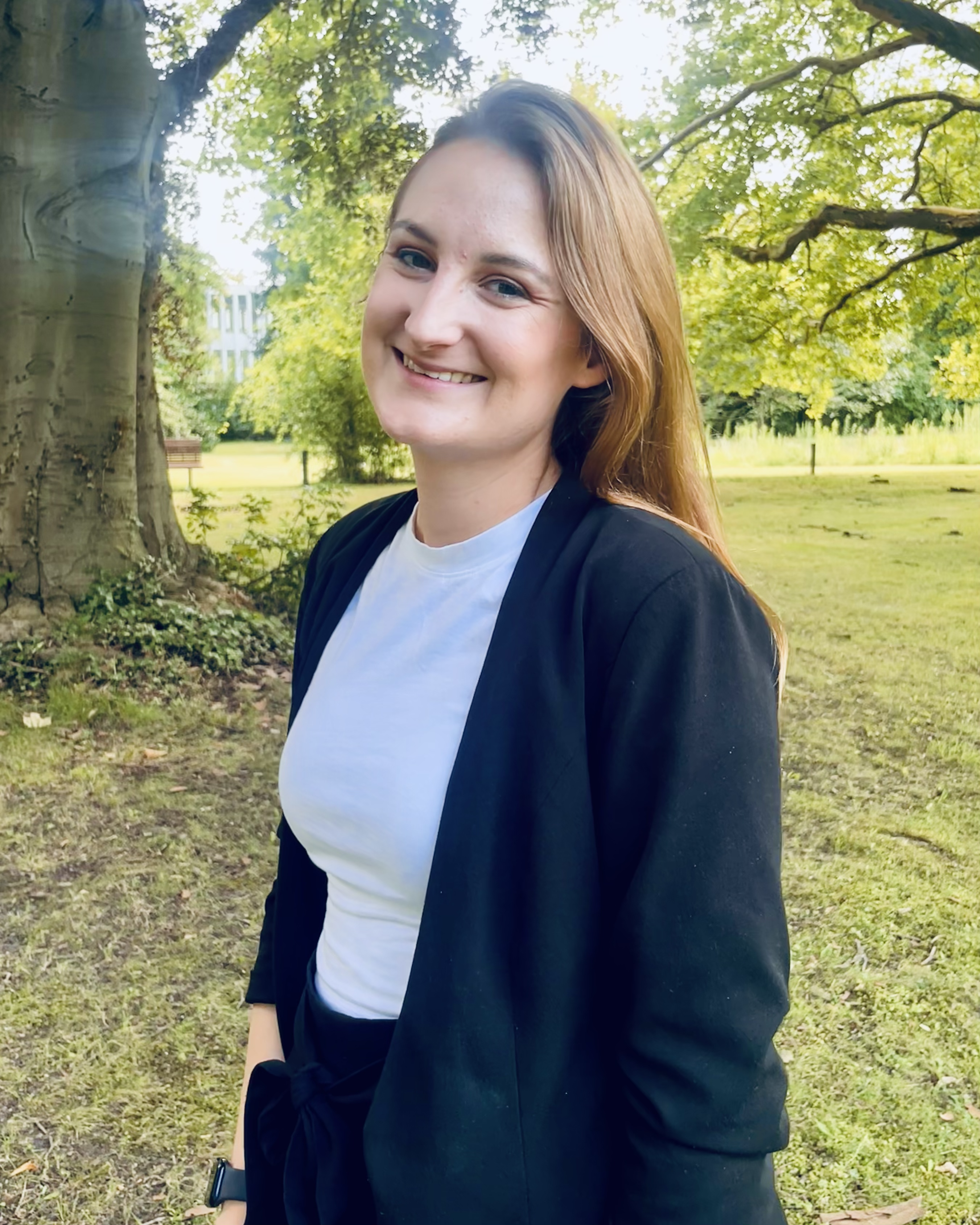
Hi there! I'm Dr. Bibi!
I recently completed my PhD in Astronomy & Astrophysics at Lund University in Sweden, where I was based for most of my doctoral research. I successfully defended my thesis, “High-resolution transmission spectroscopy of gas giant exoplanets”, on May 9th, 2025. You can check it out here!
Previously, I was part of the ESO Studentship Programme at the European Southern Observatory in Santiago, Chile (2023–2024). In October 2025, I joined ESO Garching as one of their 2025 ESO Fellows. I am always looking for students and new collaborations, so if ESO sounds as much as a lovely place to you as it does to me, feel free to reach out!
When I do research, I spend my time looking at light coming from stars and I try to isolate the signal of the planetary atmospheres of planets orbiting these stars by applying the cross-correlation technique (Never heard of that? Don’t worry about it! Feel free to ask, or look at this cool explanation video made by my (former) supervisor. Or just skip that part and think of me as a little wizard magically removing the star and Earth's atmosphere from my data — **puff**, and gone.).
The focus of my PhD was the characterisation of ultra-hot exoplanet atmospheres using high-resolution spectroscopy. I tried not only to discover what these atmospheres are made of, but also to understand why certain planets seem to differ so much from one another. I worked under the supervision of Jens Hoeijmakers at Lund Observatory, and Elyar Sedaghati and Julia V. Seidel at ESO Chile. My research mainly involved analysing observations of ultra-hot and warm Jupiters using high-resolution spectrographs on ground-based telescopes.
I focused particularly on WASP-189 b, a fascinating ultra-hot Jupiter with intriguing chemistry. Check out my Research section for more!
Prior to my PhD studies, I earned my master's degree in Physics at ETH Zurich (ETHZ). For my thesis, I examined exoplanets detected via the radial velocity method and explored their potential detectability with the upcoming METIS instrument on the ELT. This was supervised by Prof. Dr. Sascha Quanz, head of the Exoplanets and Habitability group at ETHZ.
Beyond research, I'm deeply passionate about outreach and teaching. As a first-generation student, I'm especially committed to sharing the challenges and triumphs of this journey and inspiring others to chase their dreams. I believe in making science accessible and engaging, and through public lectures, mentoring, and educational materials, I strive to share the wonders of the universe with everyone.
Research Projects & Publications
In my research, I strive to deepen our understanding of ultra-hot Jupiters—exoplanets that challenge our expectations
and continuously present new mysteries. My work spans various high-resolution spectrographs, including ground-based
instruments and the recently launched JWST. Below is a summary of my key projects to date. If you're interested in
collaborating, feel free to reach out!
You can find all my publications in this ADS Library.
Titanium Oxide and Chemical Inhomogeneity in the Atmosphere of the Exoplanet WASP-189 b
My first project involved analyzing high-resolution data of the ultra-hot Jupiter WASP-189 b, located in the
constellation of Libra. While the star itself is too faint to be seen with the naked eye, it is an excellent
target for high-resolution spectrographs. I created the artistic impression featured in the background of this
site for a press release for this paper.
 In this work, we detected nine chemical species in the atmosphere of WASP-189 b, revealing variations
attributed to the planet's dynamic and layered atmosphere. Notably, we identified titanium oxide,
a molecule that induces temperature inversions by absorbing UV light, similar to ozone in Earth's atmosphere.
In this work, we detected nine chemical species in the atmosphere of WASP-189 b, revealing variations
attributed to the planet's dynamic and layered atmosphere. Notably, we identified titanium oxide,
a molecule that induces temperature inversions by absorbing UV light, similar to ozone in Earth's atmosphere.
Publication:
Bibiana Prinoth, H. Jens Hoeijmakers, Daniel Kitzmann
et al. Nature Astronomy, 6, 449–457 (2022)
Prinoth et al. 2022 (Nature Astronomy)
Prinoth et al. 2022 (Springer SharedIt)
Time-Resolved Transmission Spectroscopy of WASP-189 b
To validate our detection of titanium oxide, we observed WASP-189 b using the ESPRESSO high-resolution
spectrograph at ESO's Very Large Telescope and the MAROON-X spectrograph at Gemini-North. Confirmatory
observations with different spectrographs are crucial to rule out instrumental effects. Our combined data
resulted in extremely high signal-to-noise detections and allowed us to study time-resolved variations.
We observed that signal strengths vary during the transit, which we attribute to ionisation or dissociation
on the planet's dayside.
Publication:
Bibiana Prinoth, H. Jens Hoeijmakers,
Stefan Pelletier et al. A&A, 678, A182 (2023)
Prinoth et al. 2023
An Atlas of Resolved Spectral Features in the Transmission Spectrum of WASP-189 b with MAROON-X
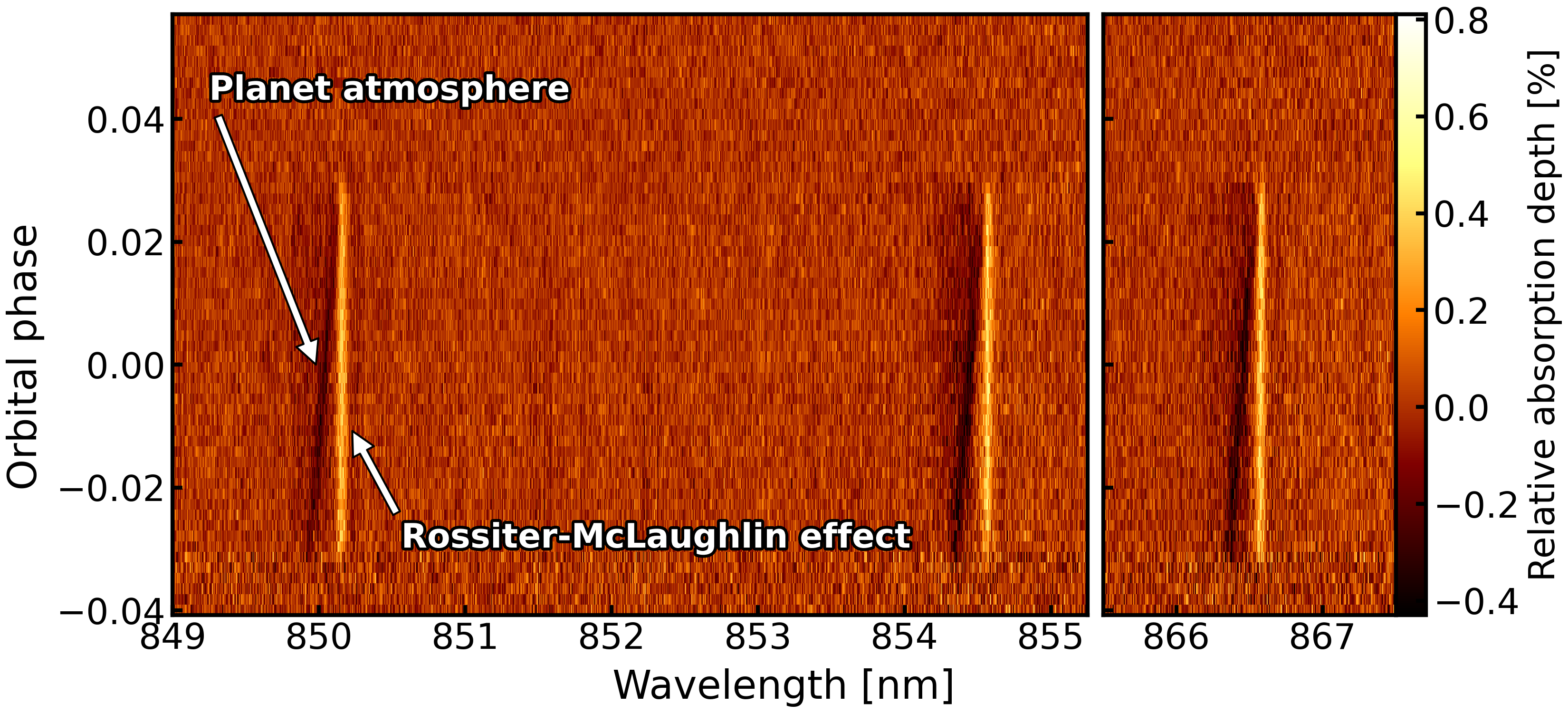 We continued our investigation of WASP-189 b with the MAROON-X spectrograph, unveiling striking spectral features.
By analyzing time-series data, we observed the Ca+ infrared triplet without the need for stacking in the planetary
rest frame. This enabled us to fit the Rossiter-McLaughlin effect in a novel manner.
We continued our investigation of WASP-189 b with the MAROON-X spectrograph, unveiling striking spectral features.
By analyzing time-series data, we observed the Ca+ infrared triplet without the need for stacking in the planetary
rest frame. This enabled us to fit the Rossiter-McLaughlin effect in a novel manner.
Publication:
Bibiana Prinoth, H. Jens Hoeijmakers,
Brett M. Morris et al. A&A, 685, A60 (2024a)
Prinoth et al. 2024
Detection of atmospheric species and dynamics in the bloated hot Jupiter WASP-172 b with ESPRESSO
In another project, with my supervisor Julia V. Seidel, we investigated the atmsphere of the bloated hot
Jupiter WASP-172 b. My contribution lies in the part of the detections using the cross-correlation technique,
namely hydrogen, sodium and tentatively also iron. The detection of iron is somewhat surprising because we
expected the planet to be too cold for iron to be in the gas-phase.
Follow-up observations are needed to confirm or refute this detection, so stay tuned!
Publication:
Julia V. Seidel & Bibiana Prinoth, Emil Knudstrup et al. A&A, 678, A150 (2023)
Seidel & Prinoth et al. 2023
High-resolution Transmission Spectroscopy of Warm Jupiters: An ESPRESSO Sample with Predictions for ANDES
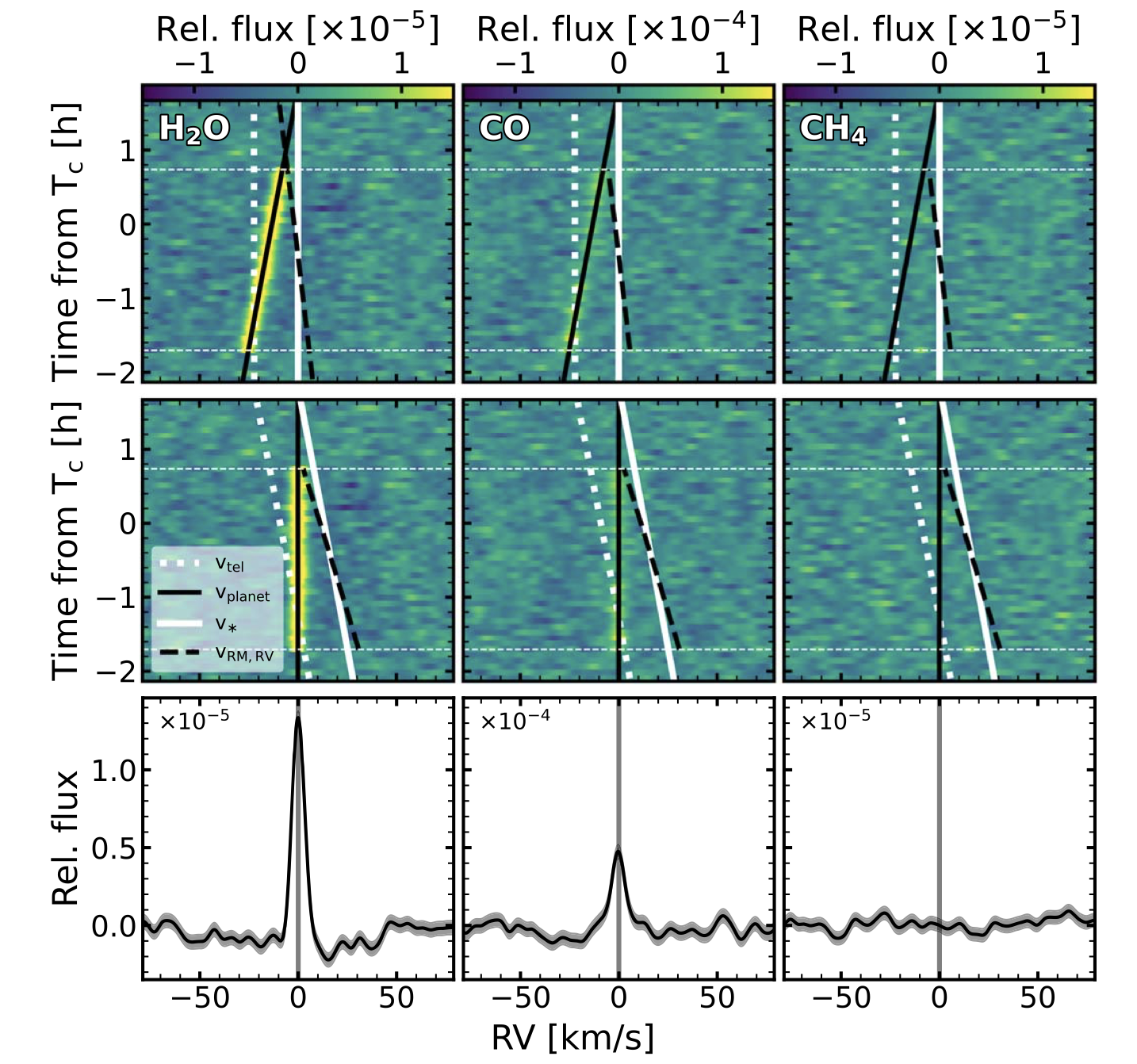 During my time at ESO Chile, I had the opportunity to broaden my research by applying the cross-correlation technique to a
new class of planets: warm Jupiters. Warm Jupiters are gas giants with orbital periods around 10 days or longer,
placing them in a less intense environment compared to their ultra-hot counterparts. However, their longer orbital
periods present the challenge of disentangling the planetary signal from that of the star and Earth.
One aspect I haven't introduced yet is what I like to call the "need for speed." Ultra-hot Jupiters orbit their
host stars relatively quickly, making it easier to separate the planetary spectrum from the stellar and telluric
lines in our observations. In contrast, longer-period planets orbit more slowly, complicating the process of separating the signals.
During my time at ESO Chile, I had the opportunity to broaden my research by applying the cross-correlation technique to a
new class of planets: warm Jupiters. Warm Jupiters are gas giants with orbital periods around 10 days or longer,
placing them in a less intense environment compared to their ultra-hot counterparts. However, their longer orbital
periods present the challenge of disentangling the planetary signal from that of the star and Earth.
One aspect I haven't introduced yet is what I like to call the "need for speed." Ultra-hot Jupiters orbit their
host stars relatively quickly, making it easier to separate the planetary spectrum from the stellar and telluric
lines in our observations. In contrast, longer-period planets orbit more slowly, complicating the process of separating the signals.
In this study, we explored how orbital configurations impact the applicability of the cross-correlation technique
for warm Jupiters. We found that, for favourable configurations—particularly planets on eccentric orbits with a
suitable argument of periastron—our current techniques can still be successfully applied. Additionally, we simulated
observations with the ANDES spectrograph (a second-generation instrument for the ELT), demonstrating its potential to
detect water and even CO in the atmospheres of these planets.
Publication:
Bibiana Prinoth, Elyar Sedaghati,
Julia V. Seidel et al. AJ, 168, 133 (2024)
Prinoth et al. (2024b)
Other projects
Lately, I have started collaborating with Elspeth Lee from the University of Bern, who published a GP-accelerated MCRT
code for three dimensional radiative transfer in exoplanet atmospheres. As part of her paper, I produced mock observations
that predict the detections of water and CO in the emission spectrum of WASP-77 A b. This collaboration has gotten me
very interested in creating mock observations, and I am currently following this little new fascination on the side.
I did this for two papers, both led by Elspeth Lee.
3D Radiative Transfer for Exoplanet Atmospheres. gCMCRT: A GPU-accelerated MCRT Code
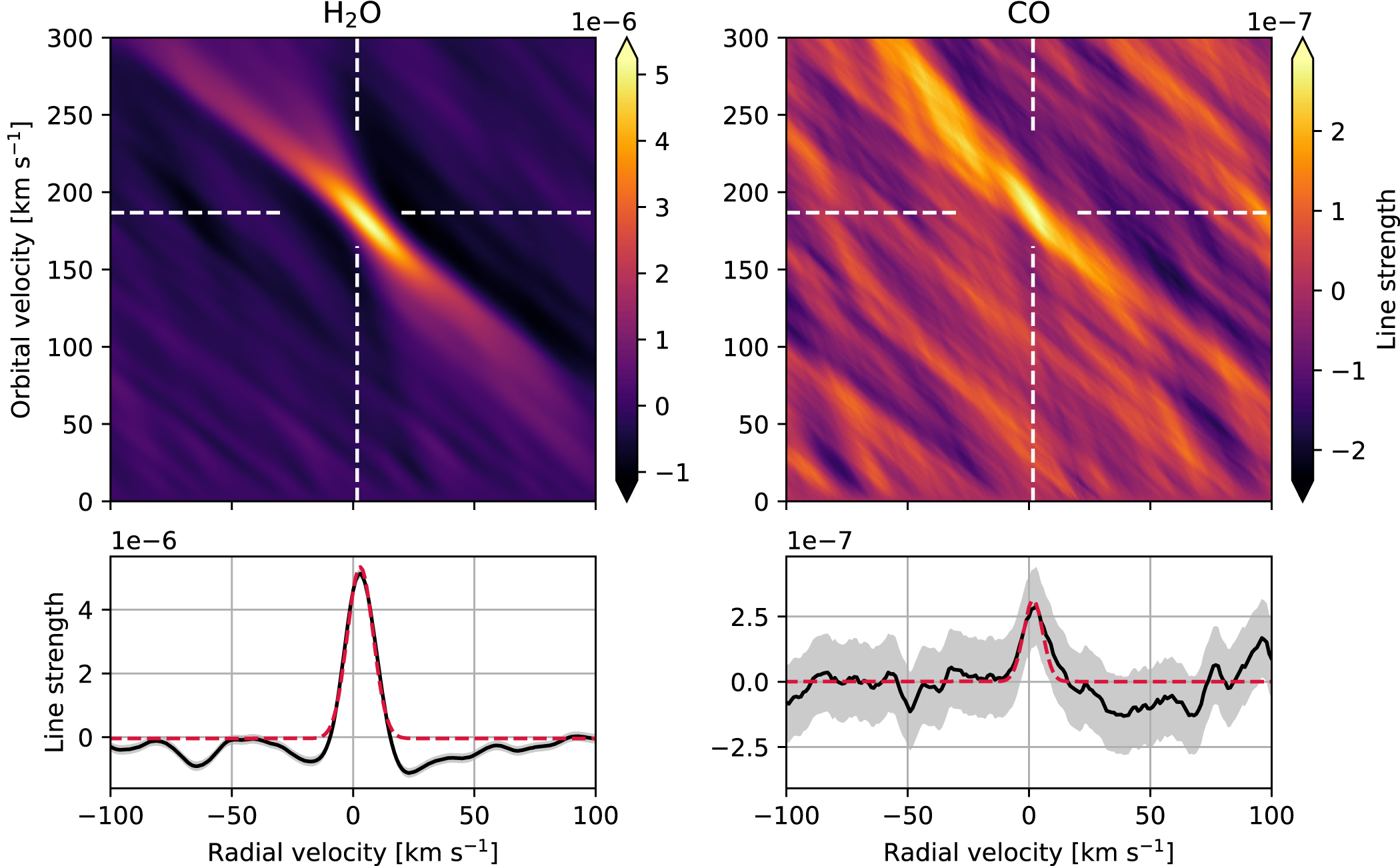
Elspeth K. H. Lee, Joost P. Wardenier,
Bibiana Prinoth et al.
ApJ, 929, 180 (2022)
Lee et al. 2022
The Mantis Network II: examining the 3D high-resolution observable properties of the UHJs WASP-121b and WASP-189b through GCM modelling
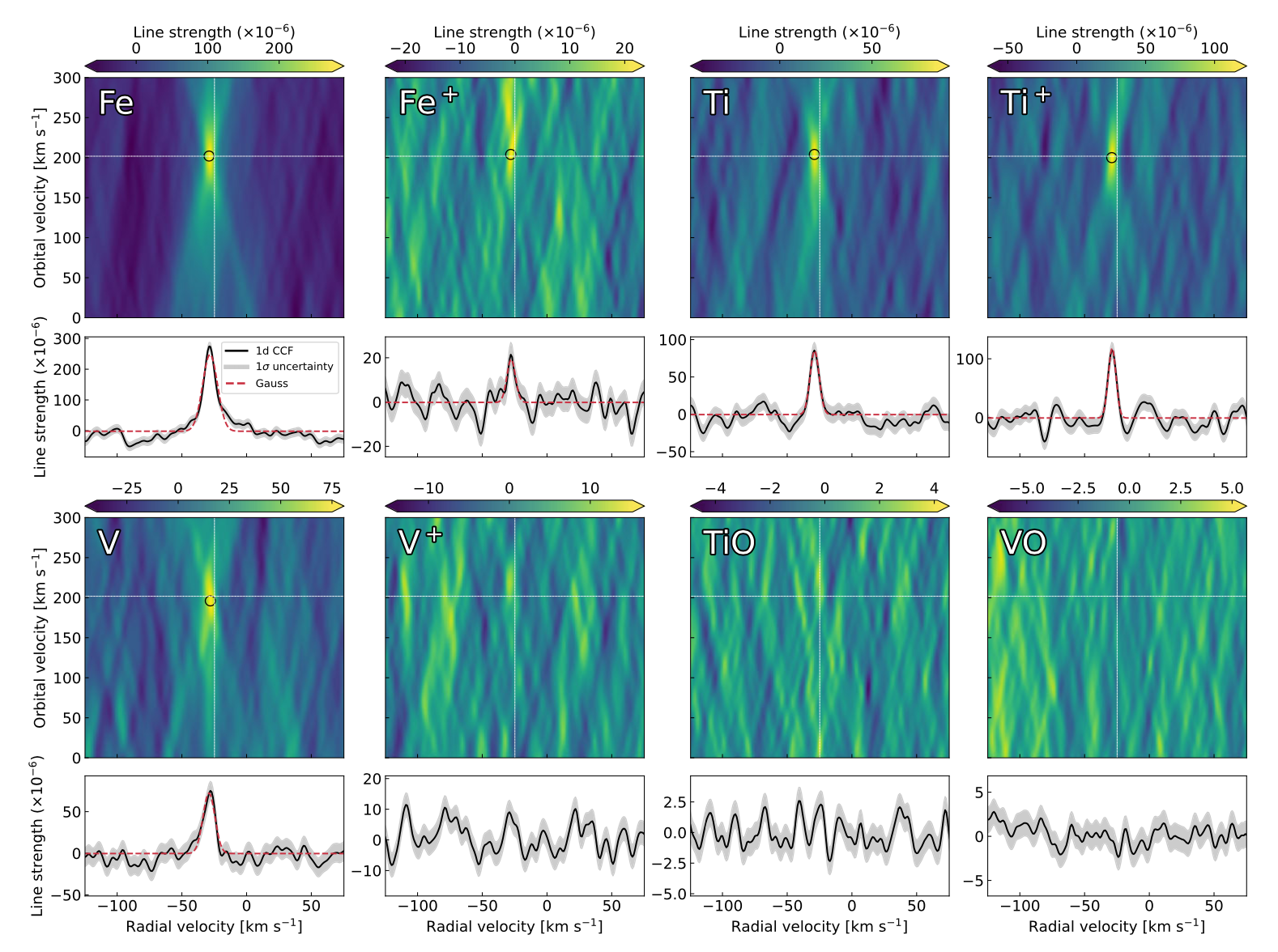
Elspeth K. H. Lee, Bibiana Prinoth, Daniel Kitzmann et al.
MNRAS, 517, 240-256 (2022)
Lee et al. 2022
The main method that I have been using for my research is called the cross-correlation technique.
It's a technique that makes use of the large number of spectral lines of a species
by combining the signal of all of them into one averaged line. This way, for species with plenty
(I am talking hundreds to thousands of lines), the average becomes quite strong
and mostly significant. To search for those species, we make use of so-called cross-correlation templates.
A standard grid has recently been published as part of our collaboration,
led by Daniel Kitzmann.
The Mantis Network I: A standard grid of templates and masks for cross-correlation analyses of ultra-hot Jupiter transmission spectra
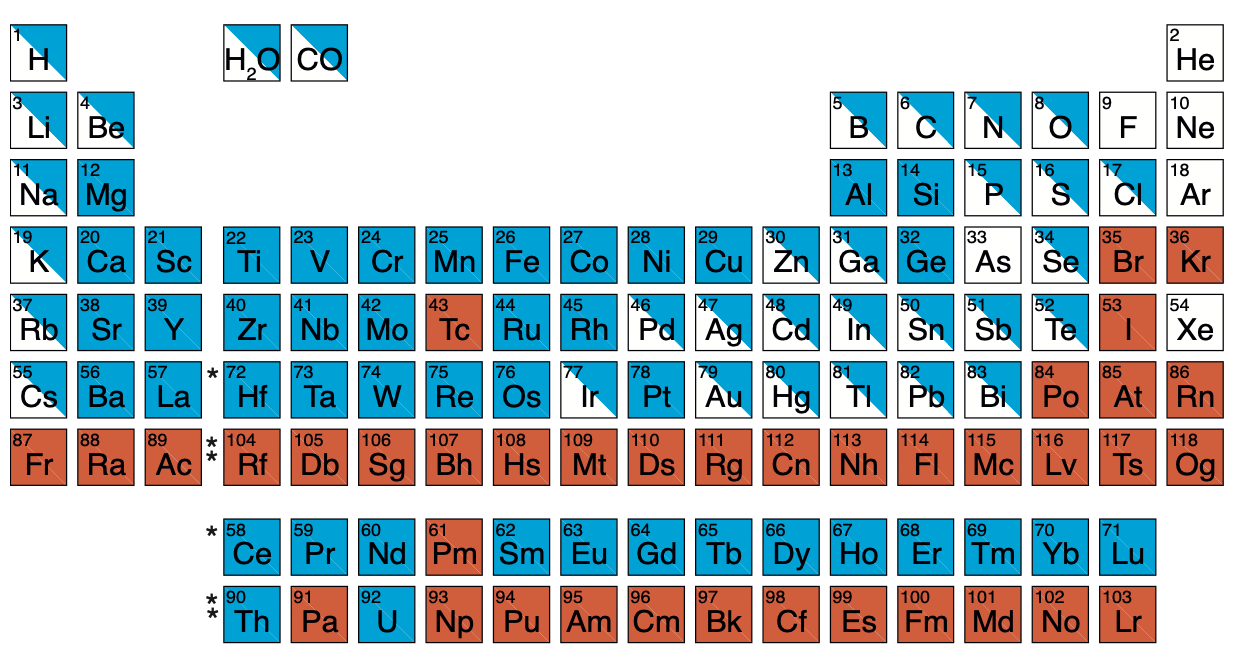
Daniel Kitzmann, H. Jens Hoeijmakers, Simon L. Grimm,
N. W. Borsato, A. Lueber and Bibiana Prinoth
A&A, 669, 22 (2023)
Kitzmann et al. 2023
Though one still has to be a bit careful with these templates, because sometimes one species tried
to mimick the signal of another. One well-known example is Mg and Fe.
In the work of Nicholas W. Borsato, see below, we investigated the atmosphere of KELT-9 b, the probably hottest
known exoplanet to-date, and search for the chemical inventory
seen in the optical. Interestingly, we also found species that had never been found before leading us to verify
them in great detail through the search of aliases.
Check the paper below if you are interested!
The Mantis Network III: Expanding the limits of chemical searches within ultra hot-Jupiters. New detections of Ca I, V I, Ti I, Cr I, Ni I, Sr II, Ba II, and Tb II in KELT-9 b
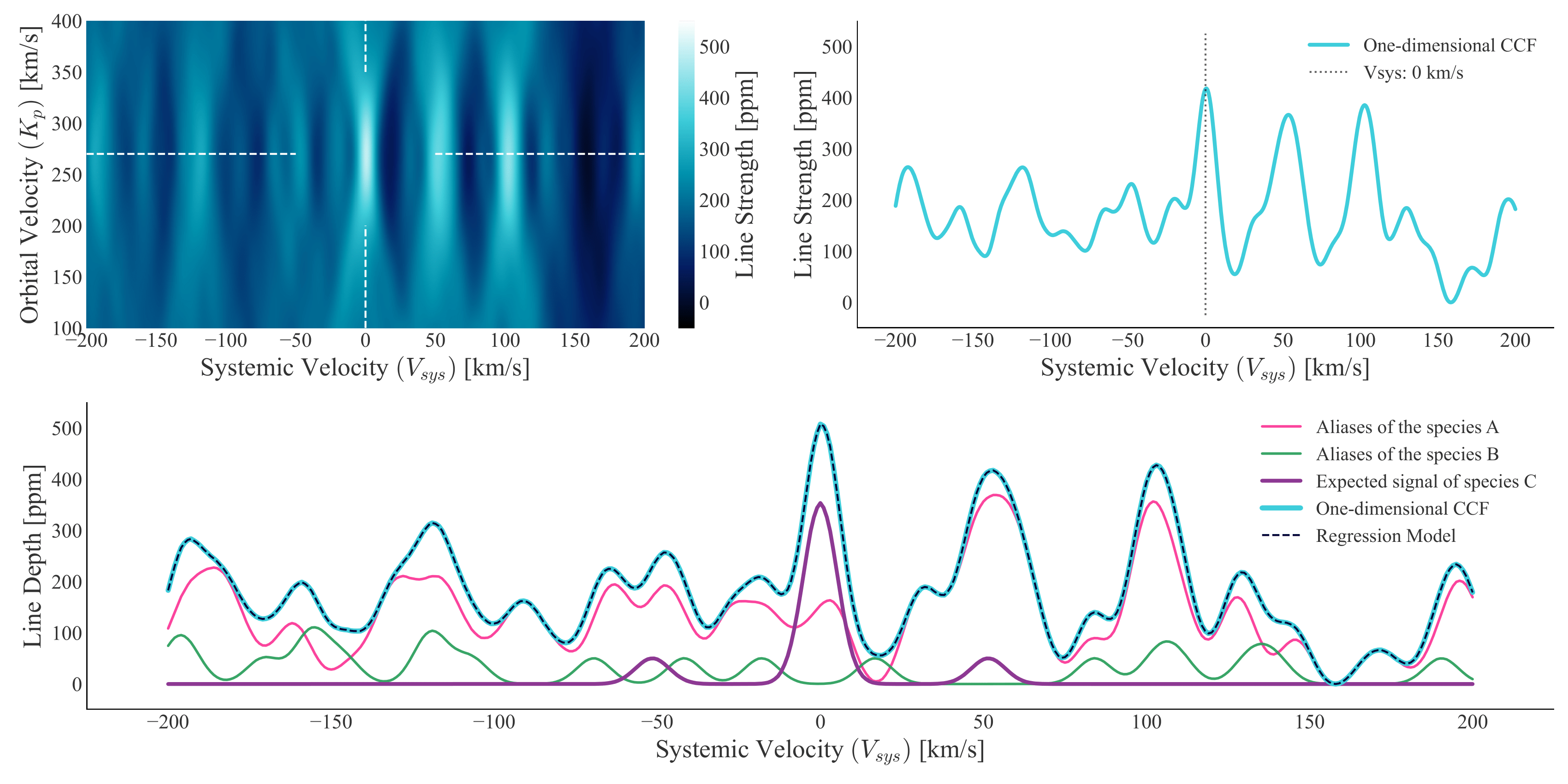
Nicholas W. Borsato, H. Jens Hoeijmakers,
Bibiana Prinoth et al.
A&A, 673, A158 (2023)
Borsato et al. 2023
Nicholas Borsato took this study even a step further and studied KELT-9 b with a spectrograph on a small telescope:
FOCES on Wendelstein in the German alps. In that work, we showed that also small telescopes can be effectively used
to study this kind of planet which opens up more readily available
telescopes to study temporal variations or atmospheric loss.
Small but mighty: High-resolution spectroscopy of ultra-hot Jupiter atmospheres with compact telescopes. KELT-9 b's transmission spectrum with Wendelstein's FOCES Spectrograph
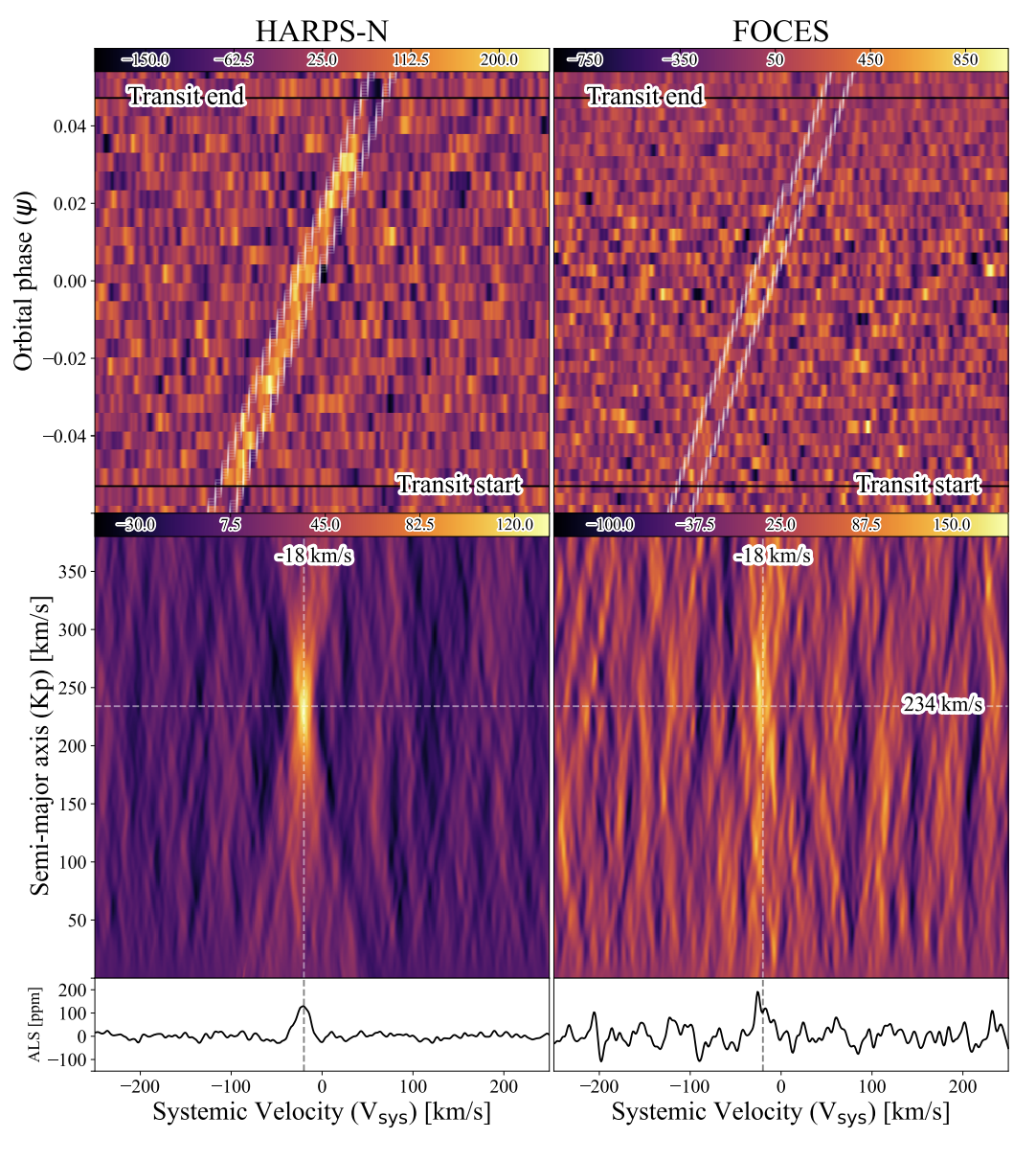
Nicholas W. Borsato, H. Jens Hoeijmakers, David Cont et al.
(including Bibiana Prinoth)
A&A, 683, A98 (2024)
Borsato et al. 2024
You remember WASP-172 b from above? I said that the planet was expected to be too cold to have iron in its atmosphere,
because we think it should rain out on the dayside and become cold-trapped. Similar stories hold for WASP-121 b and WASP-76 b.
One of the trickiest part when observing from the ground is the Rossiter-McLaughlin effect, or better said,
the correction thereof. This effect comes from the velocities of the stellar rotating disc covered by the planet during transit.
This feature is imprinted on the spectrum and when we divide - which we do for transmission spectroscopy to get rid off the stellar
component - we're going to see this feature. I recently started fitting for this feature (see also Prinoth et al. 2024),
and then contributed to some papers with that specific fits/model. Here is the first one!
Atmospheric characterisation and tighter constraints on the orbital misalignment of WASP-94 A b with HARPS
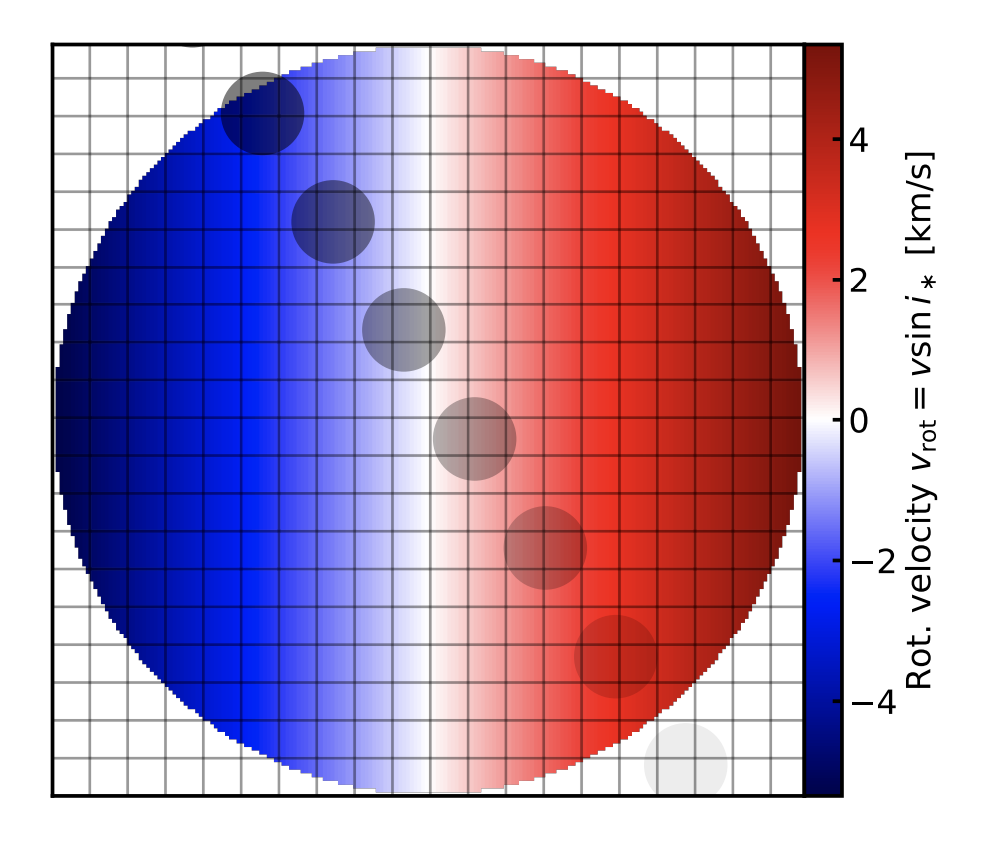
Eva-Maria Ahrer, Julia V. Seidel,
Lauren Doyle, Siddhart Gandhi,
Bibiana Prinoth et al.
MNRAS, Volume 530, Issue 3, Pages 2749–2759 (2024)
Ahrer et al. 2024
One of the fascinating aspects of my research is observing how our understanding of ultra-hot Jupiters is evolving.
Another significant project I worked on involved the exoplanet WASP-178 b. This project resulted in a publication
led by Yuri C. Damasceno, the first master's student I had the opportunity to co-supervise while at ESO Chile.
In this study, I also conducted the cross-correlation analysis for iron and magnesium.
The atmospheric composition of the ultra-hot Jupiter WASP-178 b observed with ESPRESSO

Yuri C. Damasceno, Julia V. Seidel,
Bibiana Prinoth et al.
A&A, XXX, forthcoming (2024)
Damasceno et al. 2023 (A&A)
Posters
- Exoplanets IV (Las Vegas): Titanium oxide and chemical inhomogeneity in the atmosphere of the ultra-hot Jupiter WASP-189 b
[Download pdf], [Open on Zenodo]
- Extreme Solar Systems V (Christchurch): An atlas of resolved spectral features in the transmission spectrum of WASP-189 b with MAROON-X
[Download pdf]
- Exoplanets V (Leiden): An atlas of resolved spectral features in the transmission spectrum of WASP-189 b with MAROON-X
[Download pdf]
Teaching
As part of my studies, I have been teaching students on different levels, but also for different subjects.
Here you can find all the teaching materials for the courses I have been teaching in the past.
Note that the courses taught at ETH Zurich were held in German, so the material is naturally also provided in German.
Translations upon request.
Teaching has always been dear to my heart, and if it wasn't for astronomy and all its beauty and fascination,
I'd have become a high-school teacher right after school. Learning about teaching theory and how to translate them
into practise is very important to me, as well as that my materials are used by following generations. So if you feel like
you'd like to use something for your own courses, please do not hesitate to contact me. So much time went into preparing certain
scripts, exams and exercises, it would be a shame if they weren't passed along.
All information about teaching can be found here.
Teaching at Lund University
Since the start of my PhD, I got the opportunity to engage in teaching in different ways,
such as supervise labs for students at different stages of their studies.
Recently I got the opportunity to supervise the computer lab on exoplanets detection in
ASTC01 (Astrobiology) at Lund University where I guided students through experimenting with
the radial velocity and transit technique to search for exoplanet. Further I got the chance
to teach a computer lab in FYSB21 (Mathematical Methods for Vibrations, Waves and Diffusion)
on heat diffusion.
Previous teaching at ETH Zurich
During my studies at ETH Zurich, I was involved in teaching undergraduate students in physics, mathematics, interdisciplinary sciences,
chemistry, and medicine as part of their introductory physics courses. Both normal exercise classes (weekly classes with exercise sheets
as well as theory) and exam preparation courses (intensive course just before the exams) were part of my teaching experience at ETH Zurich.
The material is in German. I am happy to give you access to the tex files of the exam preparation courses: The more people use it and improve it,
the more students benefit from it! Shoot me a message if you want access to something specific. Happy to share!
Award for Excellent Teaching 2020
While teaching Physik II for first year Bachelor students in mathematics, physics and interdisciplinary
sciences (with physics / chemistry focus) in spring 2020, I was awarded the VMP Assistentenaward (in German)
for excellent teaching assistance in spring semester 2020, by the association of mathematics and physics students
of ETH (VMP)
Exercise classes
- Physics I & II (Sep 2018 - May 2020)
- Physics II (Feb 2020 - May 2020)
Exam preparation courses
- Physics I & II (HEST)
- Physics I & II (CHEM)
- Physics I (MATH/PHYS)
- Physics II (MATH/PHYS)
Link to material (password protected)
Outreach and Science Communication
Outreach and science communication are integral to my life, and something I am truly passionate about.
Growing up in a small mountain village, my exposure to science was limited. I didn't know much about astronomy,
and I had no idea that "being a scientist" was even a possible career! As a first-generation university student,
it's really important to me that students have the information they need to make informed decisions about their futures.
This is why I dedicate a lot of my free time to making science accessible to everyone. On Instagram, under the handle
@astro.bibi_, I share posts about astronomy, along with
insights into the life of a scientist — the challenges, the joys, and the reality of it all - without filter under the hashtag
#BuzzingWithBibi. I'm also collaborating with incredible people on a series called #FirstGenStories, which celebrates the unique
journeys of first-generation doctoral students.
Beyond social media, I am always available for outreach presentations — whether through
Skype A Scientist (an amazing platform that connects
scientists with school classes and groups) or for astronomical societies and schools. Additionally,
I volunteer with the Journal of Emerging Investigators,
reviewing and editing papers submitted by high school students.
Feel free to reach out if you'd like to collaborate or have any questions!
You can contact me at exobibi [dot] astro [at] gmail.com or find me on Instagram!
Get In Touch
Address
European Southern Observatory
Karl-Schwarzschild-Strasse 2
85748 Garching bei München
Germany
Web: eso.org
Email
bibiana [dot] prinoth [at] eso [dot] org
If you are unsure about my current affiliation, you can always use
'' science [at] bibianaprinoth [dot] ch''
for anything science-related and it will forward to my current work email!
outreach [at] bibianaprinoth [dot] ch (outreach)
collab [at] bibianaprinoth [dot] ch (collaborations)
Or anywhere else ...
Elements
Text
This is bold and this is strong. This is italic and this is emphasized.
This is superscript text and this is subscript text.
This is underlined and this is code: for (;;) { ... }. Finally, this is a link.
Heading Level 2
Heading Level 3
Heading Level 4
Heading Level 5
Heading Level 6
Blockquote
Fringilla nisl. Donec accumsan interdum nisi, quis tincidunt felis sagittis eget tempus euismod. Vestibulum ante ipsum primis in faucibus vestibulum. Blandit adipiscing eu felis iaculis volutpat ac adipiscing accumsan faucibus. Vestibulum ante ipsum primis in faucibus lorem ipsum dolor sit amet nullam adipiscing eu felis.
Preformatted
i = 0;
while (!deck.isInOrder()) {
print 'Iteration ' + i;
deck.shuffle();
i++;
}
print 'It took ' + i + ' iterations to sort the deck.';
Lists
Unordered
- Dolor pulvinar etiam.
- Sagittis adipiscing.
- Felis enim feugiat.
Alternate
- Dolor pulvinar etiam.
- Sagittis adipiscing.
- Felis enim feugiat.
Ordered
- Dolor pulvinar etiam.
- Etiam vel felis viverra.
- Felis enim feugiat.
- Dolor pulvinar etiam.
- Etiam vel felis lorem.
- Felis enim et feugiat.
Icons
Actions
Table
Default
| Name |
Description |
Price |
| Item One |
Ante turpis integer aliquet porttitor. |
29.99 |
| Item Two |
Vis ac commodo adipiscing arcu aliquet. |
19.99 |
| Item Three |
Morbi faucibus arcu accumsan lorem. |
29.99 |
| Item Four |
Vitae integer tempus condimentum. |
19.99 |
| Item Five |
Ante turpis integer aliquet porttitor. |
29.99 |
|
100.00 |
Alternate
| Name |
Description |
Price |
| Item One |
Ante turpis integer aliquet porttitor. |
29.99 |
| Item Two |
Vis ac commodo adipiscing arcu aliquet. |
19.99 |
| Item Three |
Morbi faucibus arcu accumsan lorem. |
29.99 |
| Item Four |
Vitae integer tempus condimentum. |
19.99 |
| Item Five |
Ante turpis integer aliquet porttitor. |
29.99 |
|
100.00 |

 In this work, we detected nine chemical species in the atmosphere of WASP-189 b, revealing variations
attributed to the planet's dynamic and layered atmosphere. Notably, we identified titanium oxide,
a molecule that induces temperature inversions by absorbing UV light, similar to ozone in Earth's atmosphere.
In this work, we detected nine chemical species in the atmosphere of WASP-189 b, revealing variations
attributed to the planet's dynamic and layered atmosphere. Notably, we identified titanium oxide,
a molecule that induces temperature inversions by absorbing UV light, similar to ozone in Earth's atmosphere.  We continued our investigation of WASP-189 b with the MAROON-X spectrograph, unveiling striking spectral features.
By analyzing time-series data, we observed the Ca+ infrared triplet without the need for stacking in the planetary
rest frame. This enabled us to fit the Rossiter-McLaughlin effect in a novel manner.
We continued our investigation of WASP-189 b with the MAROON-X spectrograph, unveiling striking spectral features.
By analyzing time-series data, we observed the Ca+ infrared triplet without the need for stacking in the planetary
rest frame. This enabled us to fit the Rossiter-McLaughlin effect in a novel manner.  During my time at ESO Chile, I had the opportunity to broaden my research by applying the cross-correlation technique to a
new class of planets: warm Jupiters. Warm Jupiters are gas giants with orbital periods around 10 days or longer,
placing them in a less intense environment compared to their ultra-hot counterparts. However, their longer orbital
periods present the challenge of disentangling the planetary signal from that of the star and Earth.
One aspect I haven't introduced yet is what I like to call the "need for speed." Ultra-hot Jupiters orbit their
host stars relatively quickly, making it easier to separate the planetary spectrum from the stellar and telluric
lines in our observations. In contrast, longer-period planets orbit more slowly, complicating the process of separating the signals.
During my time at ESO Chile, I had the opportunity to broaden my research by applying the cross-correlation technique to a
new class of planets: warm Jupiters. Warm Jupiters are gas giants with orbital periods around 10 days or longer,
placing them in a less intense environment compared to their ultra-hot counterparts. However, their longer orbital
periods present the challenge of disentangling the planetary signal from that of the star and Earth.
One aspect I haven't introduced yet is what I like to call the "need for speed." Ultra-hot Jupiters orbit their
host stars relatively quickly, making it easier to separate the planetary spectrum from the stellar and telluric
lines in our observations. In contrast, longer-period planets orbit more slowly, complicating the process of separating the signals. 







